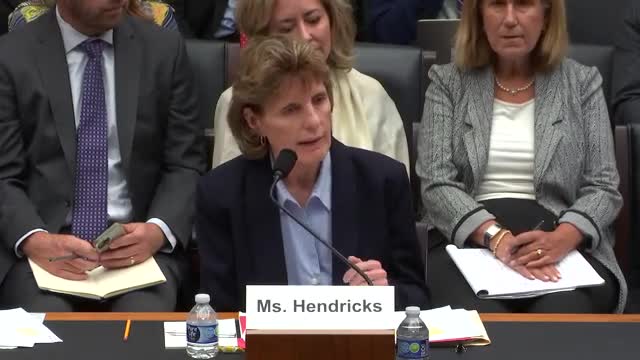Transit agencies face urgent safety crisis amid rising assaults
June 14, 2024 | Transportation and Infrastructure: House Committee, Standing Committees - House & Senate, Congressional Hearings Compilation

This article was created by AI summarizing key points discussed. AI makes mistakes, so for full details and context, please refer to the video of the full meeting. Please report any errors so we can fix them. Report an error »

During a recent government meeting, key discussions centered on the challenges facing public transit systems in the wake of the COVID-19 pandemic, particularly regarding ridership, safety, and workforce issues.
Representatives emphasized the need for collaboration among transit agencies, labor partners, and public agencies to enhance service reliability and address the ongoing budgetary shortfalls that many transit systems are experiencing. The pandemic has significantly altered commuting patterns, leading to a decline in ridership that has yet to fully recover. For instance, A and C Bus Line in New Jersey announced the termination of its Jersey City routes, prompting New Jersey Transit to step in to maintain service for residents.
Witnesses highlighted the importance of understanding community needs and gaps in service, particularly in densely populated areas. They advocated for an integrated transit system that offers multiple transportation options, including buses, commuter rail, and light rail, to effectively serve diverse commuter populations.
Safety concerns were a major focus, with transit worker assaults rising during the pandemic. Witnesses discussed the implementation of safety plans and protective measures, such as driver enclosures and alert systems, to safeguard transit workers. The need for federal support in developing these safety protocols was underscored, with calls for Congress to hold transit agencies accountable for their safety measures.
Recruitment and retention of transit workers emerged as critical issues, with many workers feeling unsafe in their roles. Witnesses noted that a significant portion of the workforce is nearing retirement, creating a potential staffing crisis. Efforts to promote the benefits of transit jobs and improve working conditions were deemed essential to attract new talent.
Overall, the meeting highlighted the urgent need for innovative solutions and collaborative efforts to address the multifaceted challenges facing public transit systems, ensuring they can provide safe, reliable, and efficient services to communities.
Representatives emphasized the need for collaboration among transit agencies, labor partners, and public agencies to enhance service reliability and address the ongoing budgetary shortfalls that many transit systems are experiencing. The pandemic has significantly altered commuting patterns, leading to a decline in ridership that has yet to fully recover. For instance, A and C Bus Line in New Jersey announced the termination of its Jersey City routes, prompting New Jersey Transit to step in to maintain service for residents.
Witnesses highlighted the importance of understanding community needs and gaps in service, particularly in densely populated areas. They advocated for an integrated transit system that offers multiple transportation options, including buses, commuter rail, and light rail, to effectively serve diverse commuter populations.
Safety concerns were a major focus, with transit worker assaults rising during the pandemic. Witnesses discussed the implementation of safety plans and protective measures, such as driver enclosures and alert systems, to safeguard transit workers. The need for federal support in developing these safety protocols was underscored, with calls for Congress to hold transit agencies accountable for their safety measures.
Recruitment and retention of transit workers emerged as critical issues, with many workers feeling unsafe in their roles. Witnesses noted that a significant portion of the workforce is nearing retirement, creating a potential staffing crisis. Efforts to promote the benefits of transit jobs and improve working conditions were deemed essential to attract new talent.
Overall, the meeting highlighted the urgent need for innovative solutions and collaborative efforts to address the multifaceted challenges facing public transit systems, ensuring they can provide safe, reliable, and efficient services to communities.
View full meeting
This article is based on a recent meeting—watch the full video and explore the complete transcript for deeper insights into the discussion.
View full meeting